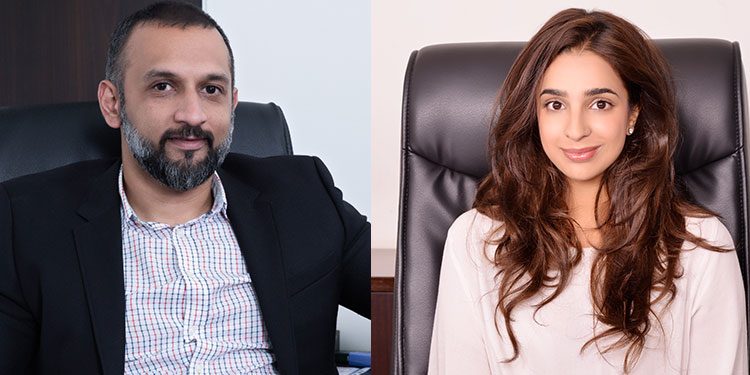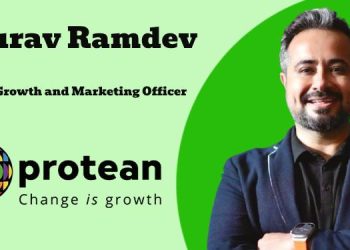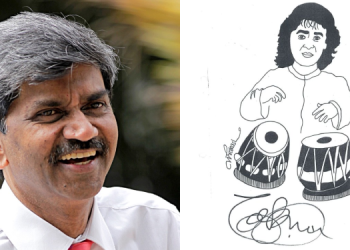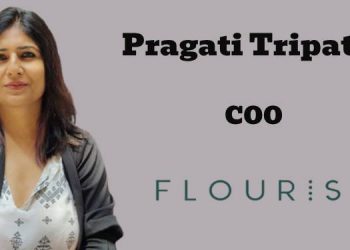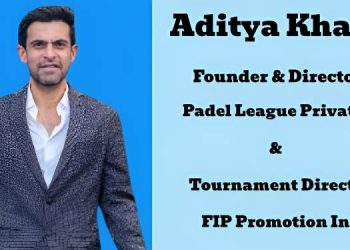Eros Now, the cutting-edge digital over-the-top (OTT) South Asian entertainment platform owned by Eros International Plc, a Global Indian Entertainment Company has had a great 2019, they have widened their base by going into the Middle East and China earlier this year. They tied up with Microsoft and now with Google – You Tube.
Medianews4u caught up with Rishika Lulla Singh, Chairman and CEO- Eros Digital and Ali Hussein, COO – Eros Now to get some interesting highlights on this tie-up and to talk about the various other initiatives by Eros Now this year.
This year has started well for Eros Now you moved into the Middle East, then China. Later in the year the tie-up with Microsoft and now Google. What has been the learning from these tie-ups?
Rishika:
I think the main theme of what we’ve actually learned from all these types is that content transcends languages, it transcends borders. It’s something you know, we’re living in a world today where I think everyone’s very content hungry. So how can we ensure that we create the correct avenues of distribution of people to consume content, as well as content that people want to watch that they’re excited to watch? I think from an India perspective, it’s really heart-warming. For example, we knew that the Middle East has a huge potential and the Middle East has a vast Indian diaspora, the locals feel so much affinity to our content. For example, even Dubai as an Emirate, all of our Bollywood stars are loved by the diaspora, as well as the locals. So our content travels well, there you take them, for example, China, again, culturally, our content fits really beautifully. If you look at the theatrical successes of the content in China, we’re actually making waves where people are preferring to watch Indian language content due to cultural similarities between China and India versus say, a Hollywood and China situation. So I think the key thing is, is that as long as we get our app, our content in the right places, the technology should be able to serve all of these countries and populations when Microsoft kind of kicks in. I think it’s a recipe for success.
We have always believed that content is not limited by boundaries. China is a great market for Bollywood content and our partnership with WASU Media and uCast ties in with our ethos of connecting with Bollywood fans across the world. Through such alliances, we will continue to build on our global reach for Eros Now. We will start to see that ramp up and appreciation happening towards the end of the year because obviously services take a little bit of time to gain traction, but initial responses have been very heart-warming. It’s a market that we’re going to be exploring in a much deeper fashion
Ali: The main reason why the Microsoft partnership is so intrinsically important is because if you think about companies like Amazon and Netflix is of the world have actually created a platform for video and for English speaking populations, Nobody thought of language audiences. So how they discover the content they want to watch and how they watch content to how they watch improve the sessions. Their journey isn’t the same as English speaking audiences. What are the nuances in terms of being able to and these are not the so called so sexy kind of work that we do but it involves a lot in terms of how to improve session times for customer behaviour which is almost two x three x and what they’re currently, so basically reorienting our entire back end structure really curious to the language speaking audiences to improve sessions.
Rishika: We should just add to that, I think what’s really important in terms of what we’re doing, Microsoft is very much a natural addition as to how our kind of crazy vision and goals, how we see arrows now, deep at our core, that’s the philosophy that for our app to be successful, it needs to be and feel like an extension of yourself as an individual as a consumer. So all of these architectural changes, and a lot of the tech development and innovation that we’re creating is a first of its kind worldwide. It ties in beautifully with our philosophy of your app should be an extension of you.
The tie-up with Google,how did you strategize this?
Rishika: I think we’ve had a great relationship with Google. This is actually something that came across through us brainstorming, how do you tie these two worlds together? How do you drive a larger subscription base in a very price point sensitive and aware market. That is what we wanted to tackle together. It’s something I think if I’m honest, we started these discussions, 14 months ago.Well, the fact that this tie-up is a big one for India. I don’t think India has ever done something like this. It is also a first for Google to tie up with a web platform.
Ali: But the whole notion is how you package the best entertainment together. I think that a combination of YouTube Music premium and a combination of library of our movies and originals and our upcoming slate provide great value proposition to the consumer that has not been seen before. If I’m not mistaken, I believe this is the first time Google or YouTube as an entity has ever done any form of bundling partnership in the world. So it’s a first for them as well. I think what’s beautiful is there’s obviously a lot of faith that comes between Eros and Google of our relationship and both of our strengths and we believe in each other to drive a strong direct to consumer subscription base with content. When two Big boys come together then the whole scenario, especially the Music App platform changes.
YouTube has never been a subscription based platform. So how did you strategize to get them to agree to this 99 rupees for three months and later on 99 per month?
Ali: YouTube in their own independent strategy has launched YouTube music, which is a premium subscription ad free product, sometime this year and it was a major one for them.It’s an important kind of customer experience that they’re providing, which is saying that the traditional YouTube platform has ads, this platform is ad free, but it’s a subscription based service. So I think the synergy which Rishika mentioned is interesting because the fact is they have a significant amount of the consumption comes from music, we also have some music not obviously as much as they but we’ve got a significant amount of films. We decided and said let’s have a core entertainment offering. The whole relationship is symbiotic in nature and an interesting kind of customer proposition as we were thinking customer first.Then it was mutually decided as to the sweet spot, we did some research in terms of the pricing, and found that once it is priced as a mode to displace a certain amount of people and kind of evangelise the concept of digital subscriptions, it makes sense for us to kind of subsidise that and increase the funnel of users interaction. So it’s a great, we look forward to kind of build this relationship says in phase one of the relationship that we will do it phase by phase and we’re going to probably go live like in a couple of days in terms of service and will be marketing it . We can’t discuss our marketing strategy presently. But the intent is for people to actually experience both subscription services at a value price point of interest. It will work from both sides. That means all our interest is met in the interest of the ecosystem and evangelise the digital subscription space.
Rishika: Our middle India strategy on Eros Now and our focus is also to ramp up the tier two and tier three markets. It’s important to have an alignment with a brand that transcends all of the tiers in India. YouTube is a brand that travels from Metro cities to tier two, tier three so aspirations, growth and alignment in terms of which we’re targeting and comes through beautifully.
Ali:There might be users who might want to consume a free service and many of our subscribers we believe will be willing to pay for this service. In fact, YouTube’s is as much riding on the Eros Now value proposition of a paid service, and Eros Now riding on the You Tube penetration and that’s why that makes this relationship so beautiful because both of us have key strengths. Our key strength is that our subscribers are willing to pay for movies, and eventually they will pay for music as well. That’s why we made even more sense when we started talking about it and playing it up because it said that, you’ve got an objective or an aspiration that you’re trying to do and we’ve got the objective. We’re trying to build our entire direct consumer base and who better than the two of us to come together and talk about digital subscriptions. This is the first part.
With this tie-up what kind of ARPU’s you expect from India and the International market?
Rishika: This tie-up is only for India presently. I think we will also figure out along the way, as the service goes live we will actually see how customers are staying on how they’re renewing demand for this bundle that will then enable us to probably build out a case for as to what exactly the numbers and ARPU’s will look like. But as of now, when we look at India, we look at manual operators for Eros now subscribers sitting around the $5 month.So it could be around that mark eventually, obviously, it’s something we’d like to figure out how to push up the subscriptions.
You are a great believer in the SVOD platform.Would you want to look at some kind of branded content in this tieup?
Ali: I think what we’re trying to do is keep it simple We’re not trying to add multiple layers because we believe that we want to make it simplistic to the customer. So it’s literally simple Eros Now + YouTube 99 rupees. As for branded copy and content opportunities we’re looking at something interesting coming down the pipeline not in branded content, but brand and content platform. We’re doing something interesting in that space. YouTube obviously does a lot of work with brands and I think that independent aspirations and both these companies have in the evolution of the partnership, we might do something together. At this stage we said that, let’s go to grassroots keep it simple make customer proposition that is value that is easy to take update by the customers. Let’s study the data as I mentioned, and then stage two stage three of this. There is going to be a deeper evolution of the larger partnership as we go along, and I foresee events I would say not exactly branded content but brands and content being looked at.
Recently Kantar has partnered with VTIYMDM for OTD audience measurement, what is your take on it?
Ali: TV has a lot of GEC’s and the world is a standardised in one box. If you look at OTT is slightly differentiated; businesses like Facebook and TikTok,YouTube, you’ve got platforms like TVF and Dice Media, businesses like the TV channels, which are running digital businesses, which is essentially an extension of the existing TV programming. A step up above that, you’ve got the movies. I don’t think the benchmark for each of these are the same, then there is online video which is a larger bucket, let me give one example TikTok might not be considered with session time, for TikTok the number of unique viewers is important, for us as a benchmark session time is as important, probably slightly more important than unique viewers.
We cannot generalise OTT as one bucket, because technically if WhatsApp, WeChat is doing video that’s technically OTT. I think the standardisation needs to happen within what markets you fall into and what it is and to try to measure. That’s one part, the second part is too early from the evolution of the business to look at the fact in terms of what are the standard metrics? Why are we measuring the TV universe?So that the advertisers had some sort of metrics to follow? Yes, we’re redefining what is our audience for the metric, I think once we deliver, what are we measuring? Why are we measuring it? And consistency among stakeholders in that bucket? I’m sure we will arrive at that funnel.
Rishika: I mean, also, if you look at what’s happening with a lot of our Western counterparts, these measurement tools don’t exist. Western international content providers, if they want to talk about how their content is performing on an international platform, they still don’t get access to that. I don’t think it’s necessarily India specific issue. I think it’s a global world over issue and I think the content and the technology fraternity needs to come together to figure out how that transparency can be created.
Recently we are seeing different set of advertisers, one for TV and another for the digital platform, is that working for the broadcaster or for the OTT platform?
Ali:They’re trying to figure out in terms of is there a migration of audiences to OTT and am I garnering new audiences for OTT and not cannibalising my TV viewership. So there is some experimentation which is great for the industry because the industry is looking to experiment to figure out how this audience migration is happening. Does anybody have a specific answer the question the answer is no. We used to do that way back at MTV. Separate advertisers for Roadies on MTV and digital back in 2010.Advertisers will be where the audience is and on which platform? Is online the primary viewership platform or the second?If you start getting those answers, that’s where it becomes interesting to see let’s telecast it on digital first and then put it on Television.
We experimented way back in 2015 with Manmarziyaan and Happy Bhag Jayegi they were available on Eros Now before it went on to TV. We were the pioneers. I’m saying that the thing when you actually start doing disruption at its core is where you actually start bringing a change the way people consume content.
Way forward?
Ali:We are hopefully looking to kind of evangelise this to subscriptions, that’s the goal, we believe it is the bread and butter of the business, to add on that they we are very pleased to add another first of large scale collaboration with one of the largest companies in the world. So we now have Google on our list in terms of partnerships. The fact that we were the only Non US app to be partnered with Apple plus worldwide and the Microsoft announcement. So kudos to the team, it’s a big one. 2019 has been a great year for us, the year has not ended and we have a few more announcements.
Your take on that regional content? How much of OTT content is being viewed by regionally?
Rishika: Regional is a huge focus for Eros, and Eros Now, you actually see those buckets growing really, really quickly, as the country continues to get digitalized. As digitalization spreads you seeing these kind of local languages jumping onto the ecosystem, and if you can’t solve them in that localised manner, you’re creating a lot of brand loyalty. In terms of our original content slate, we’re going to be making a lot of content. So all of these regional languages and from a theatrical perspective, we’re quite excited.
We have Haathi Mere Saathi coming next year, it has been shot in three languages. It’s a trilingual, Hindi, Tamil and Telugu. I think that’s the first time that something like this has also been done. So regional has been a big focus for us and we believe that a lot of growth in the country is going to come from these content segments.

